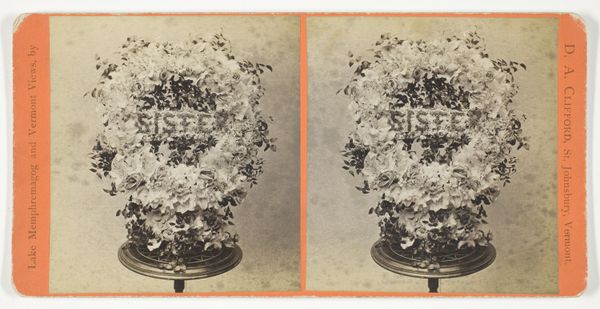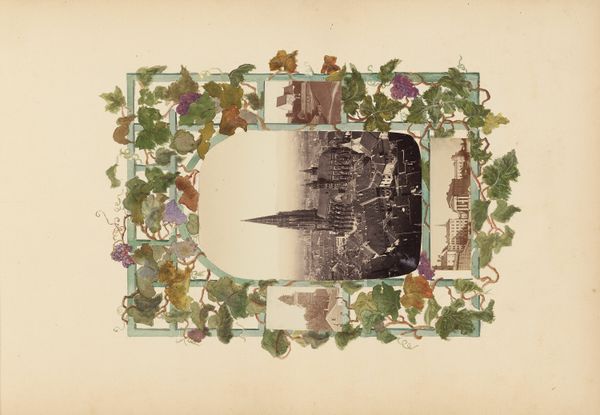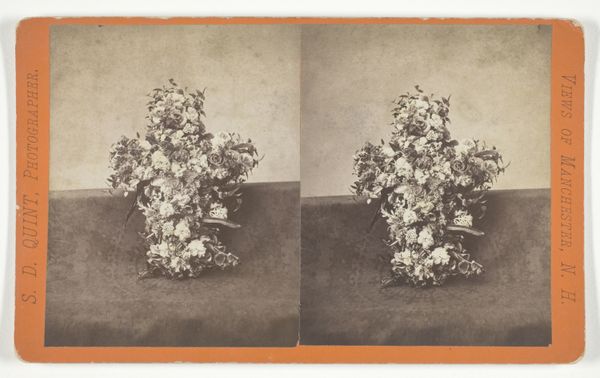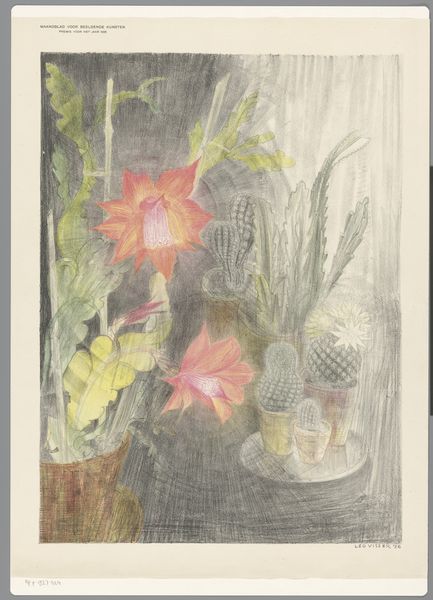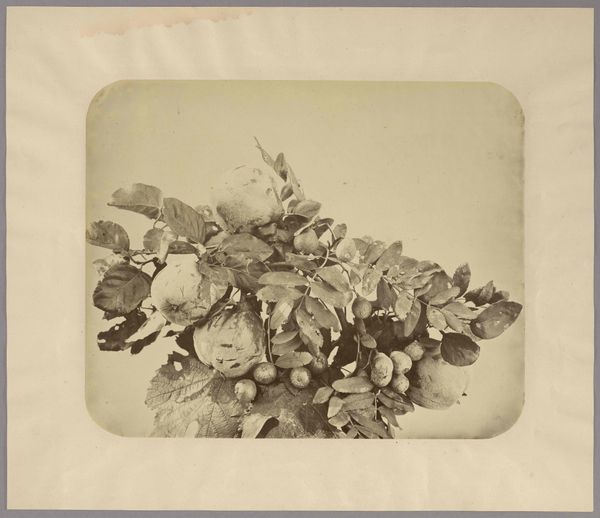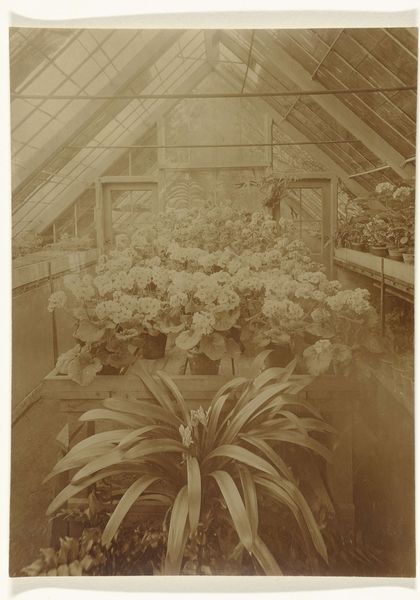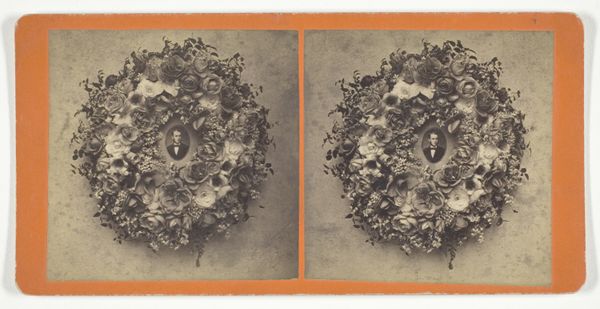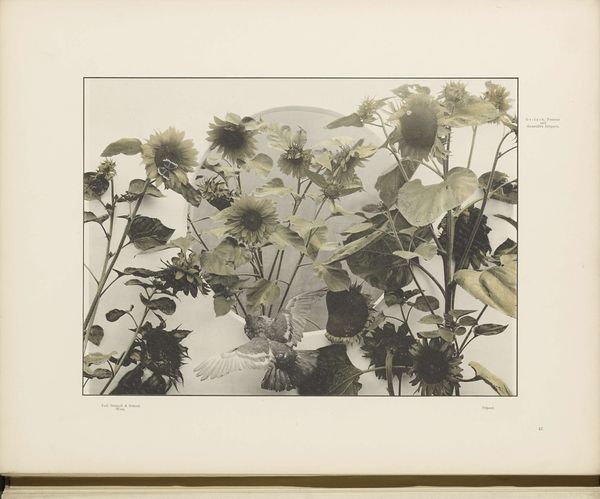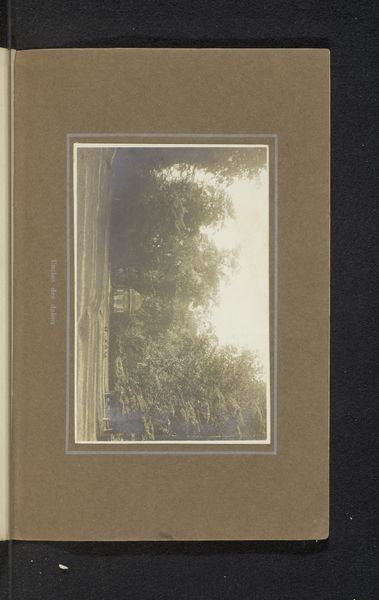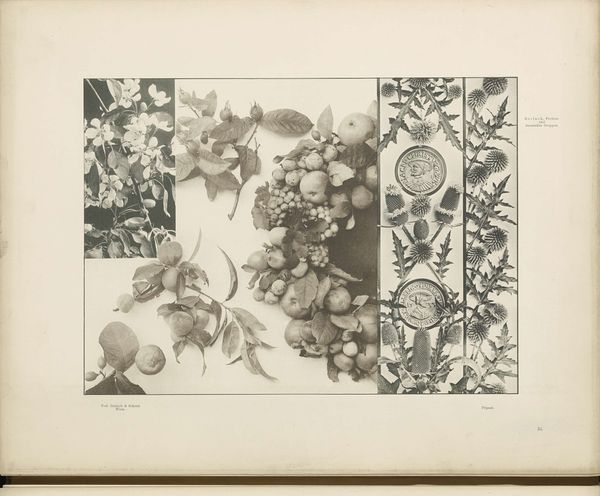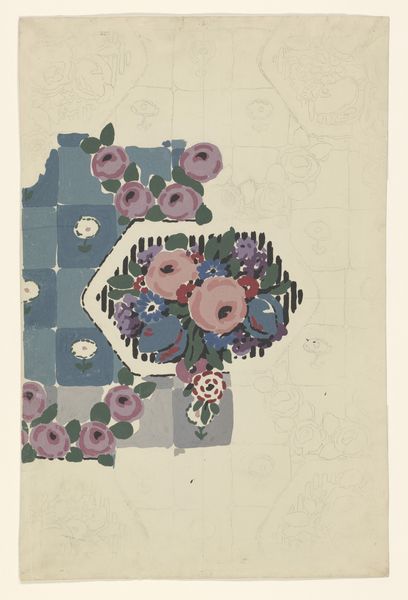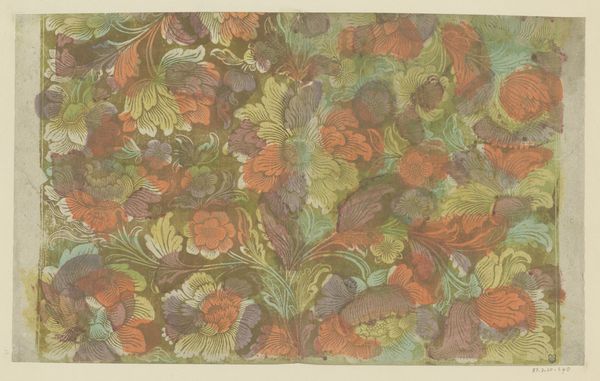
photography
#
photography
#
watercolor
Dimensions: height 199 mm, width 260 mm
Copyright: Rijks Museum: Open Domain
Curator: Before us, we have “Chrysanten in een Keizerlijke tuin, Japan,” or "Chrysanthemums in an Imperial Garden, Japan," a photograph, most likely a print, created before 1903 by Kusakabe Kimbei, currently residing here at the Rijksmuseum. Editor: It feels very contained, doesn’t it? A mass of chrysanthemums shaped like a neat dome, trapped in an almost brutalist concrete container. There's something quietly sad about it. Curator: Sad? Well, Kimbei was a fascinating figure, really at the intersection of art, craft and commerce. He wasn't necessarily concerned with "capturing reality," as it were. These hand-colored albumen prints, like this one, were produced en masse for the tourist market, catering to Western fascination with "exotic" Japan. Editor: Ah, the scent of orientalism. So, it's less about an authentic "imperial garden" and more about constructing a marketable image, complete with picturesque chrysanthemums signifying longevity. Curator: Precisely. Note the staged, almost artificial light, and how the flowers themselves are presented like a meticulously arranged display, which reinforces a sense of idealized tranquility intended to appeal to Western buyers. Think about the labor, the workshops filled with artisans meticulously hand-tinting these images. Editor: Yes, the unseen hands behind the picturesque image. And even the materials tell a story, albumen, glass plates… These objects carried within them the marks of colonial encounter, transforming what Japan was offering to the West. But those flowers, though… the muted tones against the stark, grayed surrounding, is something I did not quite expect. Almost dream-like… Curator: Indeed. Japonisme took the Western world by storm at this time. The photograph served as tangible pieces that the wealthy collectors would keep with themselves to reflect the cultural movement happening around them. Editor: Well, it certainly shifts my perspective knowing more about the context and how it was constructed for consumption. It’s difficult to reconcile the exploitative nature with what appears as just “beauty.” Curator: Right? It's an invitation to consider layers. Now, walking away I consider my initial assumptions and that constant tension when cultural appreciation brushes up against appropriation, with tangible artifacts from that dance.
Comments
No comments
Be the first to comment and join the conversation on the ultimate creative platform.
